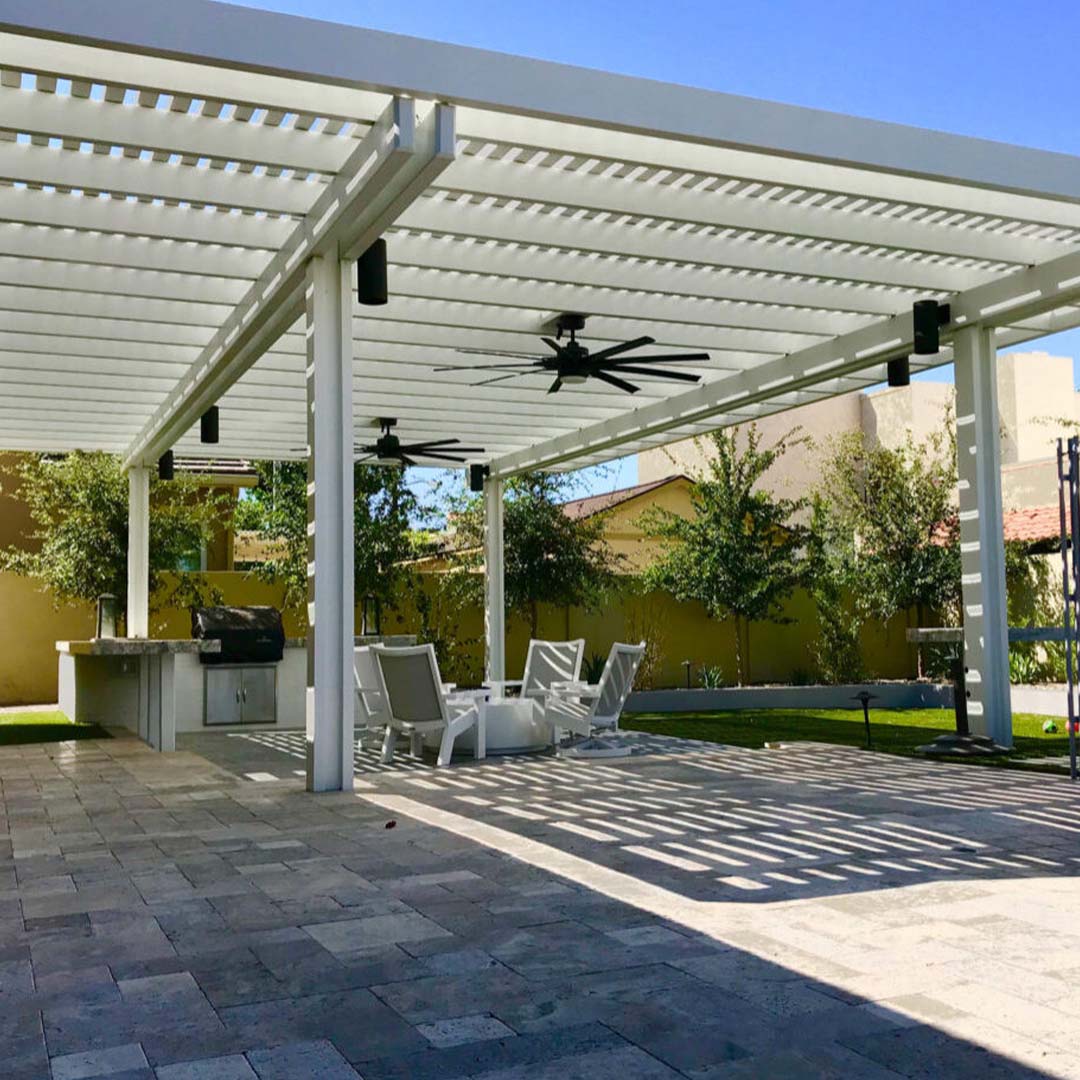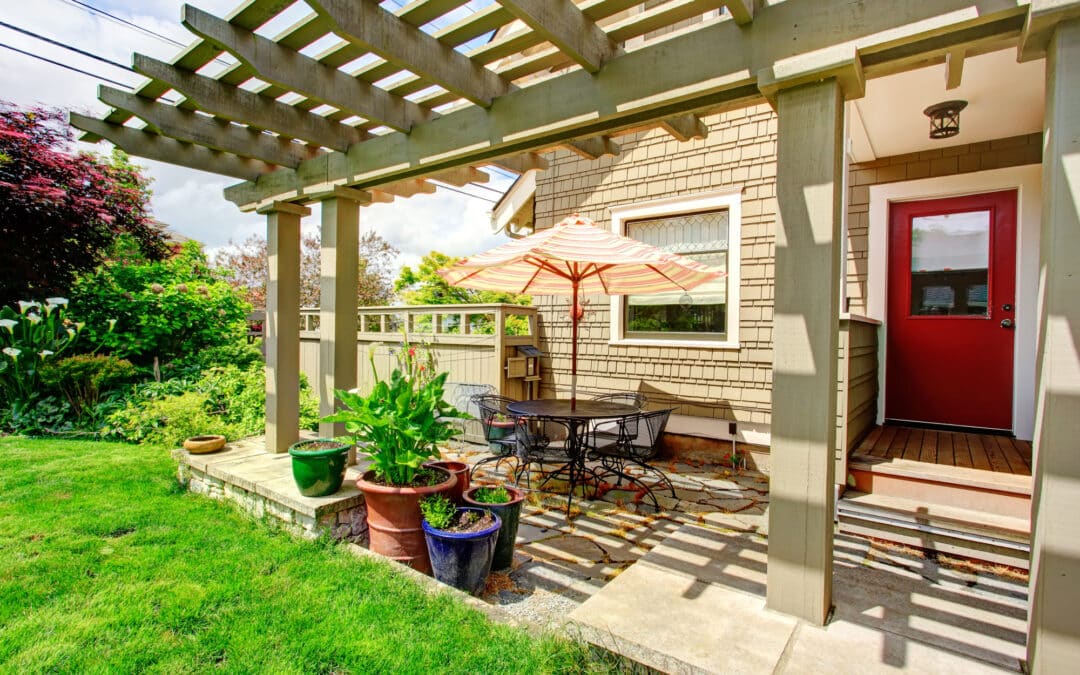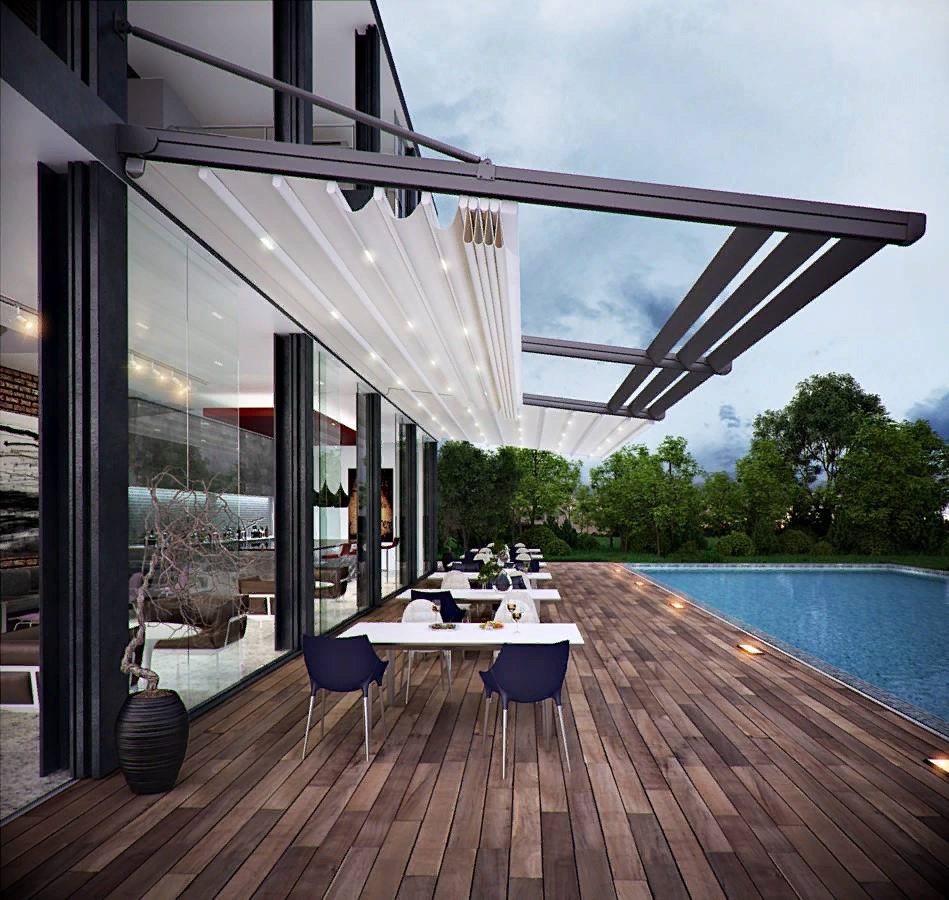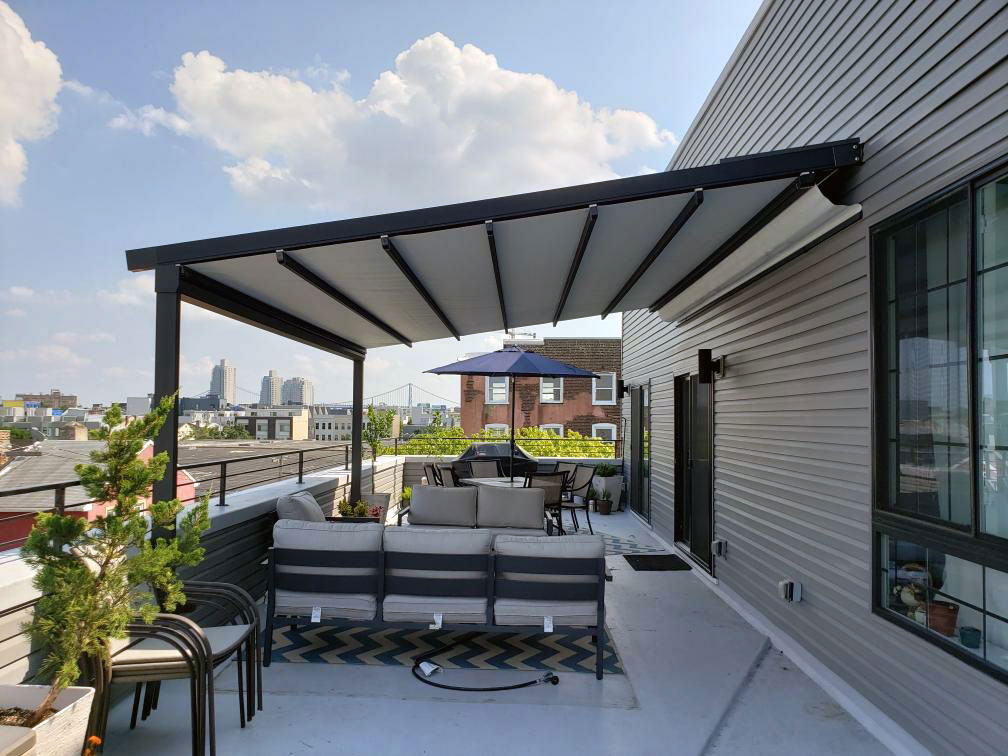Introduction: The Quest for Outdoor Comfort
As summer days grow warmer and longer, the quest for comfortable outdoor living spaces intensifies. Homeowners seeking respite from the sun’s intense rays often find themselves weighing the pros and cons of two popular shade solutions: awnings and pergolas. Each offers distinct advantages, catering to different aesthetic preferences, functional needs, and budgetary considerations. In this comprehensive comparison, we delve into the world of awnings and pergolas, exploring their design, versatility, cost-effectiveness, and the unique ambiance they bring to your backyard oasis.

Awnings: Versatile Sun Shields
Awnings are retractable or fixed shade structures attached to the exterior of a building, primarily designed to shield windows, doors, patios, or decks from direct sunlight. They come in various forms, including traditional fabric awnings, modern motorized retractables, and even solid metal or polycarbonate panels. Fabric awnings, often made from durable acrylic materials, boast vibrant colors and patterns that can be customized to match the home’s facade. Motorized options offer convenience, allowing users to extend or retract the awning with a push of a button, adjusting to changing weather conditions or sun angles. Awnings excel in their ability to provide targeted shade where it’s needed most, directly over frequently used outdoor seating areas.
Pergolas: Architectural Statements
In contrast, pergolas are freestanding or attached structures featuring open-lattice roofs, creating a semi-shaded area beneath. Traditionally made of wood, modern pergolas also utilize materials like vinyl, aluminum, or fiberglass, offering greater durability and low-maintenance options. Pergolas are celebrated for their architectural charm, adding a touch of elegance and defining outdoor spaces without completely blocking natural light. With climbing plants like ivy or wisteria trained along the beams, pergolas can transform into lush, green retreats over time. Unlike awnings, pergolas are less adjustable, offering a more permanent shade solution that integrates seamlessly into landscaping designs.

Cost Considerations: Initial Investment vs. Long-Term Benefits
When it comes to upfront costs, awnings generally present a more affordable option, particularly for smaller installations. Basic fabric awnings can be relatively inexpensive, while motorized retractables or larger custom designs escalate in price. However, awnings’ potential to reduce energy costs by shielding windows and doors from direct sunlight can result in long-term savings on cooling bills, offsetting some of the initial expense.
Pergolas, on the other hand, often involve a higher initial investment due to their structural complexity and use of more substantial materials. Construction costs can escalate with customization and the addition of features like integrated lighting or retractable canopy systems. Despite the heftier price tag, pergolas can significantly boost property value due to their aesthetic appeal and functionality, potentially providing a return on investment if the property is sold in the future.
Flexibility and Adaptability
One key difference between awnings and pergolas lies in their flexibility and adaptability. Retractable awnings offer unparalleled control over sunlight exposure, allowing homeowners to adjust the amount of shade according to the time of day or personal preference. This feature is especially beneficial in regions with variable weather, enabling quick adjustments during unexpected rain showers or gusts of wind.
Pergolas, while less adaptable in terms of sun control, offer opportunities for customization through the addition of shade cloths, retractable canopies, or even louvered roof systems. These modifications can enhance their functionality, albeit at an additional cost. Moreover, pergolas can serve multiple purposes, functioning as a framework for outdoor entertainment systems, lighting, or even a green wall, making them versatile in their own right.

Maintenance and Durability
Maintenance requirements should also factor into the awning versus pergola decision. Fabric awnings require periodic cleaning and, depending on the material, occasional treatment to maintain their water repellency. Motorized components necessitate occasional checks to ensure smooth operation. Metal or polycarbonate awnings are more resilient but may require cleaning to prevent dirt accumulation.
Pergolas, particularly wooden ones, demand more substantial maintenance, including regular painting, staining, or sealing to prevent rot and maintain aesthetics. Vinyl and aluminum pergolas are more low-maintenance, requiring only occasional cleaning. Climbing plants, while visually appealing, also introduce additional upkeep to prune and manage growth.
Aesthetics and Personal Style
Ultimately, the choice between an awning and a pergola may boil down to personal style preferences and the desired ambiance for your outdoor space. Awnings, with their sleek and streamlined designs, suit modern homes or those seeking a more contemporary look. They can be subtle additions that blend seamlessly with the building’s facade or make bold statements with vibrant colors and patterns.
Pergolas, with their classic and romantic appeal, lend themselves to traditional, Mediterranean, or rustic-style homes. They offer a sense of permanence and structure, defining outdoor rooms and encouraging vertical greening. For those who appreciate the interplay of light and shadow or desire an integrated garden feature, pergolas can be the perfect fit.

Integration with Outdoor Living Spaces
When considering the integration of awnings or pergolas into your outdoor living space, it’s essential to think about how each option complements your existing landscape design and intended usage. Awnings are typically more straightforward to integrate, providing immediate shade without significantly altering the architectural footprint. Their ability to be retracted when not in use allows for unobstructed views and an open-air experience, which can be particularly desirable for smaller patios or balconies where space is at a premium.
Pergolas, on the other hand, often become a central feature of the outdoor area, structurally defining spaces for dining, relaxation, or entertainment. With their vertical presence and potential for greenery integration, pergolas can create a more immersive outdoor room, enhancing privacy and fostering a connection with nature. For those looking to establish distinct zones within a larger yard or garden, pergolas can act as transitional elements, leading from one outdoor space to another.

Conclusion: Choosing Your Shade Companion
In the shade showdown between awnings and pergolas, there is no one-size-fits-all solution. Each offers unique benefits tailored to different lifestyles, budgets, and design aspirations. Awnings excel in their affordability, adjustability, and energy-saving capabilities, while pergolas charm with their architectural beauty, versatility in function, and potential to enhance property value. By carefully considering factors such as cost, flexibility, maintenance, and aesthetic goals, you can confidently select the shade solution that will transform your outdoor living space into a haven of comfort and relaxation. Whether you opt for the tailored convenience of an awning or the timeless elegance of a pergola, the right choice will elevate your outdoor experience, inviting you to savor every sunny day in your personalized oasis.
